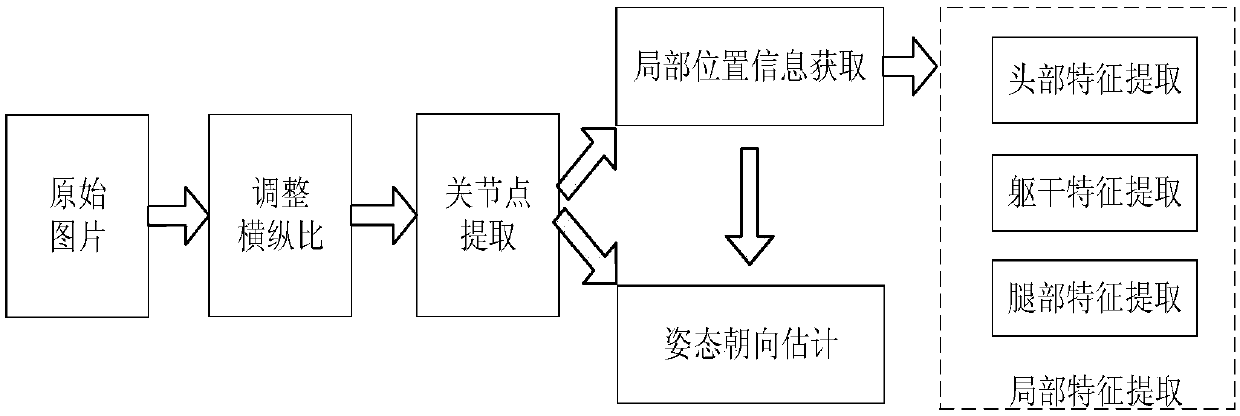Pedestrian re-identification method using attitude information to design multi-loss function
A pedestrian re-identification, loss function technology, applied in the field of computer vision
- Summary
- Abstract
- Description
- Claims
- Application Information
AI Technical Summary
Problems solved by technology
Method used
Image
Examples
Embodiment Construction
[0088] The specific steps of the present invention will be described in detail below in conjunction with the accompanying drawings and embodiments.
[0089] The present invention proposes a pedestrian re-identification method using attitude information to design multiple loss functions, first combining figure 1 The overall schematic diagram introduces the pedestrian re-identification process of the present invention in detail. The present invention includes offline and online stages, wherein the offline stage includes preprocessing, rough feature extraction, fine feature extraction, feature fusion, quintuple similarity measurement, multi-class loss function calculation, and network parameter learning; the online stage is It includes four parts: feature extraction, similarity measurement, image library update and result visualization.
[0090] Stage (1) Offline stage: training and learning the network model for extracting features.
[0091] A. The steps of data preprocessing ...
PUM
 Login to View More
Login to View More Abstract
Description
Claims
Application Information
 Login to View More
Login to View More - R&D
- Intellectual Property
- Life Sciences
- Materials
- Tech Scout
- Unparalleled Data Quality
- Higher Quality Content
- 60% Fewer Hallucinations
Browse by: Latest US Patents, China's latest patents, Technical Efficacy Thesaurus, Application Domain, Technology Topic, Popular Technical Reports.
© 2025 PatSnap. All rights reserved.Legal|Privacy policy|Modern Slavery Act Transparency Statement|Sitemap|About US| Contact US: help@patsnap.com



